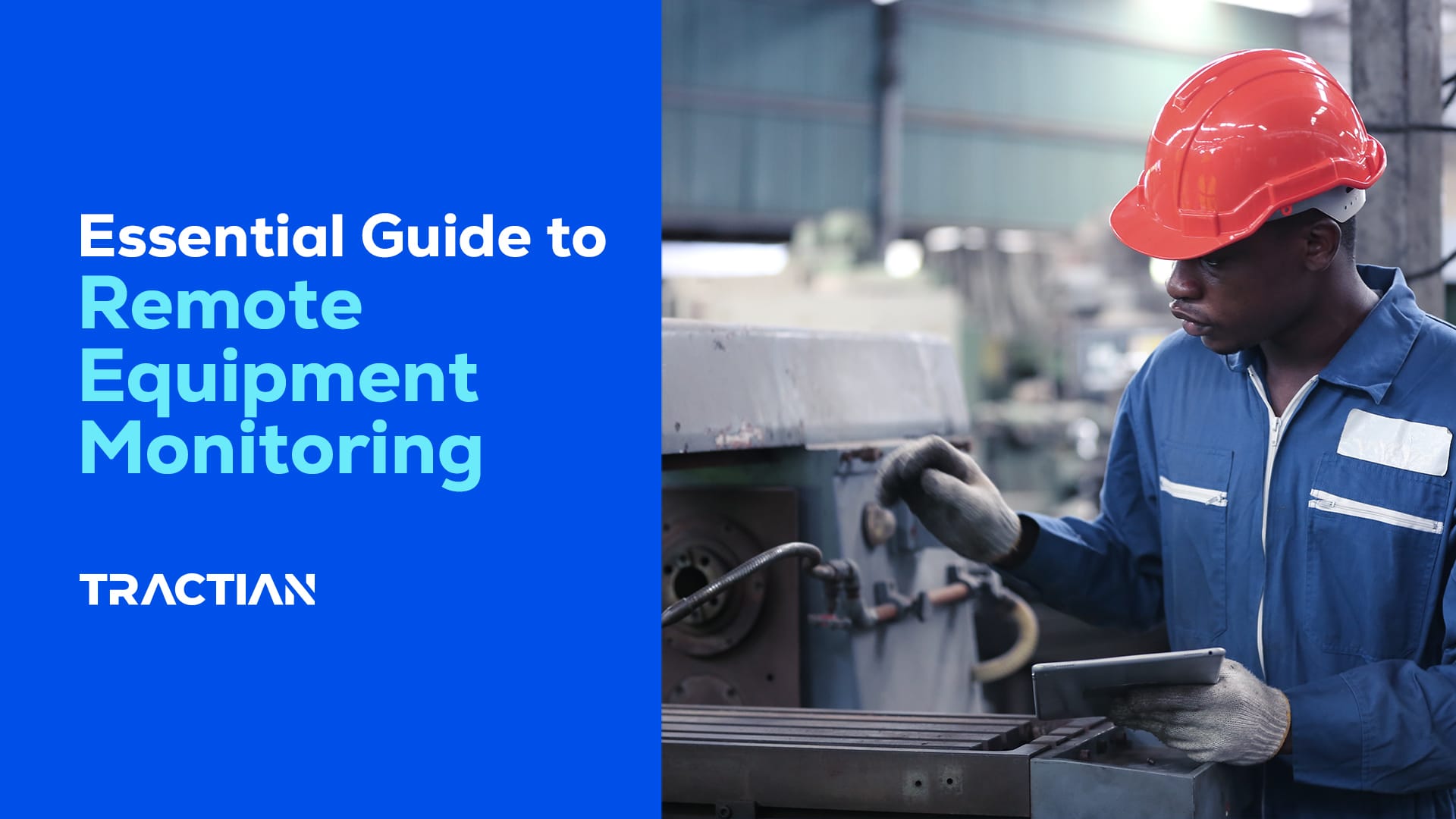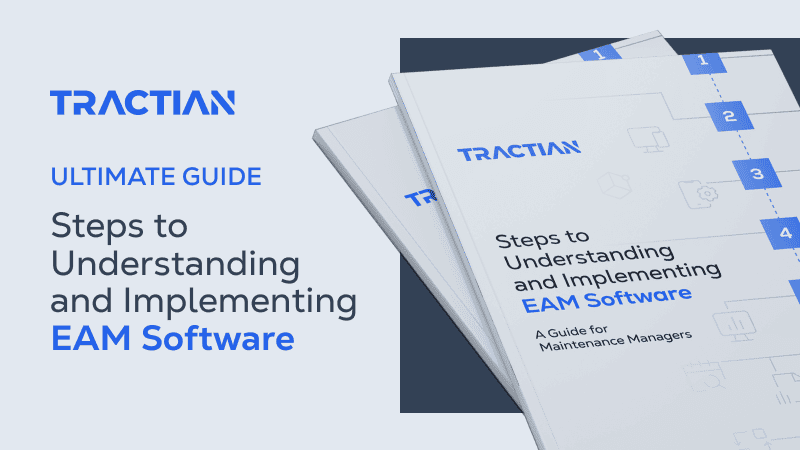Imagine you’re the conductor of a symphony. Every instrument is vital. In an industry scenario, unlike an orchestra, your equipment can’t exactly tell you when they’re about to go off-key. So, how do you keep the music playing?
Traditionally, the answer involved a lot of legwork - constant check-ups, a watchful eye on gauges, and hoping for the best.
But the industrial landscape is changing its tune. Enter Remote Equipment Monitoring (REM), a technological shift that’s more than just keeping an eye on things from afar.
It’s about understanding the health of your equipment like a well-trained sound, vibration, energy, and heath engineer, pinpointing potential problems before they erupt into a full-blown breakdown.
This isn’t just about convenience for maintenance managers (although, let’s be honest, remote access is pretty handy). It’s about optimizing performance, maximizing uptime, and ultimately, keeping your industrial operation running smoothly.
As industries get more complex, REM offers a smarter, more data-driven approach to keeping everything in peak condition.
We’ll delve into the specifics - the nuts and bolts of REM, the benefits it unlocks, and how it’s transforming the future of maintenance. Let’s go!
What is Remote Condition Monitoring?
Forget crystal balls, meet real-time data: Remote Condition Monitoring (RCM) isn’t about predicting the future, it’s about seeing the present with laser focus.
Imagine an elite squad within your company, dedicated to squeezing every ounce of efficiency out of your equipment.
This is your energy management team, and RCM is their secret weapon.
Think of it like this: sensors are like eyes and ears, constantly monitoring vitals like temperature, vibration, and energy consumption of your machinery.

This intel is then beamed back to your maintenance team, who analyze the data in real time, translating these whispers into actionable insights.
Here’s where the magic happens.
Your energy management team can use this info to identify areas for improvement, develop targeted strategies, and track progress.
It’s like having a conductor in the control room, fine-tuning the performance of your entire industrial operation.
The result? Reduced energy waste, optimized operations, and a significant boost to your bottom line.For a deep dive into how this transforms maintenance from reactive to proactive, our guide on RCM is your next must-read destination.
The Key Components of a Remote Monitoring System
There’s more to REM than meets the eye. It’s not just a passive observer; it’s an intelligent system that orchestrates data collection, transmission, and analysis.
Let’s break down the key components that make REM tick:
Sensors and Data Acquisition Systems
These are the workhorses of REM, acting as tiny data sponges embedded within your equipment.
They continuously monitor critical parameters like temperature, vibration, and energy consumption, providing a real-time picture of machine health.
Think of them as the eyes and ears on the ground, gathering the raw intel that fuels REM’s insights.
Communication Networks: Wired vs. Wireless
Once collected, this data needs to travel. That’s where communication networks come in. You have two main options:
- Wired networks: Reliable and secure, wired connections offer a steady stream of data, ideal for critical equipment or situations requiring guaranteed transmission. However, they can be expensive and inflexible to install, limiting their use in dynamic environments.
- Wireless networks: These provide greater flexibility and ease of deployment, making them perfect for hard-to-reach locations or constantly changing industrial layouts. However, wireless networks can be susceptible to interference and may have limitations on data transfer speed.
The best choice depends on your specific needs and priorities.
Data Analysis and Management Software
Here’s where the magic happens.
Data analysis and management software, like an EAM/CMMS solution, takes the raw data collected by sensors and transforms it into actionable insights.
It uses algorithms and predictive models to identify trends, anticipate potential problems, and trigger alerts for maintenance teams.
This software is the conductor of the REM orchestra, interpreting the data symphony and ensuring every instrument (machine) performs optimally.
Benefits of Remote Equipment Monitoring
When we talk about remote equipment monitoring, it’s not just about seeing more; it’s about strategically leveraging data to unlock a treasure trove of benefits.
Let’s delve into the ways REM supercharges your industrial operations:
Enhanced Predictive Maintenance
Traditionally, maintenance resembled a game of whack-a-mole - scrambling to fix surprise breakdowns. REM rewrites the rules.
By continuously monitoring equipment health, it identifies potential issues long before they erupt into downtime disasters.
Imagine this: you can schedule repairs on your terms, avoiding costly production halts and keeping your operation humming along like a well-oiled machine.
It’s proactive maintenance on steroids (basically, predictive maintenance at its best), slashing downtime and boosting overall efficiency.
Improved Equipment Lifespan and ROI
Think of your equipment as a racehorse. Without proper care, it gets winded fast.
REM acts like a dedicated trainer, meticulously monitoring performance and ensuring timely maintenance.
This TLC translates to a longer and healthier life for your machinery. But the benefits go beyond longevity.
By maximizing equipment uptime and preventing premature failures, REM significantly improves your return on investment. Every dollar spent on your assets stretches further, ensuring you get the most bang for your buck.
Enhanced Safety and Compliance Standards
Safety shouldn’t be an afterthought.
REM empowers you to become a safety superhero in your industrial domain. How? By providing real-time insights into equipment health, it helps you identify potential safety hazards before they materialize.
This proactive approach minimizes the risk of accidents caused by malfunctioning machinery, keeping your workers safe and your operation running smoothly.
Additionally, remote equipment monitoring aids in adhering to ever-evolving safety regulations.
With strict compliance standards under constant scrutiny, REM ensures your facility stays on the right side of the law, protecting both your people and your business.
Real-time Alerts and Decision-making Support
REM equips you with the ultimate weapon - real-time data.
Imagine a constant stream of insights flowing directly to your fingertips, alerting you to potential issues the moment they arise.
This instantaneous knowledge empowers you to make informed decisions on the fly, nip problems in the bud before they escalate, and ensure your operations remain uninterrupted.
So, it’s not just about having more data; it’s about having the right data at the right time to make lightning-fast decisions that optimize your entire operation.

Remote Monitoring and Maintenance: A Comprehensive Approach
Remote monitoring changes the maintenance game. How? Let’s explore how REM/RCM and maintenance strategies work in perfect unison to elevate your industrial operations.
REM/RCM + Preventive Maintenance: From Guesswork to Precision
Traditionally, preventive maintenance was like scheduling oil changes based on the phases of the moon.
REM/RCM injects real-time data into the equation, allowing you to ditch the guesswork and schedule maintenance with pinpoint precision.
So, no more unnecessary downtime or wasted resources.
REM/RCM + Predictive Maintenance: Anticipate, Don’t React
Combined with predictive maintenance, REM transforms your operation into a fortune teller’s paradise.
By analyzing historical data and identifying trends, it anticipates equipment failures before they become real problems in your production line.
Imagine catching a potential breakdown before it sparks a major meltdown.
This proactive approach minimizes downtime, extends equipment lifespan, and ultimately, keeps your profits singing a happy tune.
Operational Excellence
REM/RCM isn’t just about keeping things running; it’s about elevating maintenance from a chore to a strategic asset.
This comprehensive approach fosters a continuous cycle of improvement, ensuring your operations not only function smoothly but consistently reach new heights of efficiency.
It’s like having a dedicated conductor constantly fine-tuning your industrial orchestra, guaranteeing a flawless performance every single time.
How to Implement Remote Condition Monitoring in Your Operations
Ready to unleash the power of condition monitoring in your operations? Here’s your roadmap to navigate the integration process.
Step 1: Chart Your Course - Needs Assessment & Goal Setting
Before diving in, take a deep breath and assess your industrial landscape. Identify the pain points and opportunities unique to your operation.
What keeps you up at night? Is it unexpected downtime? Equipment breakdowns impacting production? High maintenance costs?
Clearly defining your goals - reduced downtime, extended equipment life, or improved safety - becomes the compass guiding your RCM journey.
Step 2: Navigate the Tech Landscape - Choosing the Right Tools
The world of RCM technology is vast, with lots of sensors, software, and systems trying to grasp your attention.
So, don’t get lost in the maze.
Use your clearly defined goals from step 1 as your guiding star. Prioritize solutions that work seamlessly with your existing infrastructure and offer scalability for future growth.
Remember, you’re building for the long haul.
Step 3: Bridge the Human Gap - Training & Change Management
Technology is just one piece of the puzzle.
The real transformation happens when your team embraces RCM.
Invest in training to equip your workforce with the knowledge and skills to leverage this new system effectively. Anticipate some resistance to change - it’s natural.
Foster a culture of innovation by clearly communicating the benefits of RCM, showcasing how it empowers them to work smarter, not harder.

Overcoming Challenges in Remote Monitoring
Remote Monitoring unlocks a treasure trove of benefits, but it’s not without its challenges.
Here’s how to navigate the roadblocks and maximize your RCM success.
Challenge #1: Fort Knox Security for Your Data
In today’s digital age, data security is paramount.
A data breach can cripple your operation and erode trust. Treat your RCM data like the crown jewels.
Implement robust encryption protocols and enforce strict data access controls. Remember, vigilance is key - stay updated on the latest cybersecurity threats and continuously refine your data security practices.
Challenge #2: Building a Bridge of Connectivity
Without a reliable connection, your RCM system is like a phone with no signal.
Explore diverse communication technologies to find the solution that best suits your needs.
Wired networks offer rock-solid stability, while cellular and satellite options provide flexibility for remote locations.
The key? Choose a solution with built-in redundancy to ensure your data flow remains uninterrupted, regardless of glitches or environmental challenges.
Challenge #3: From Data Deluge to Actionable Insights
RCM generates a wealth of data, but raw data alone isn’t enough.
It’s the insights hidden within that hold the true power. Invest in advanced data management and analytics tools.
These tools will transform the data flood into actionable intelligence, allowing you to identify trends, predict potential issues, and make data-driven maintenance decisions with lightning speed.
Selecting the Right Remote Condition Monitoring Solution
Selecting the right Remote Condition Monitoring solution involves pinpointing features that align with your operational needs, evaluating vendors for reliability and support, and conducting a cost-benefit analysis to ensure a favorable return on investment.
Look for solutions with comprehensive sensor capabilities, real-time analytics, and intuitive user interfaces.
Vendor reliability, ongoing support, and a track record of successful deployments are crucial.
Additionally, consider the total cost of ownership, including setup, maintenance, and potential savings through improved efficiency.
Oh, and don’t be afraid to shortlist a few strong contenders and request demos.
This hands-on approach allows you to assess user interface ease-of-use and compatibility with your existing infrastructure.
TRACTIAN’s solutions, noted for an innovative approach in condition monitoring and maintenance management, embody these qualities!
Ultimately, the perfect RCM solution should feel like an extension of your existing operation, not a bolted-on add-on.
Curious about TRACNTIAN’s solutions? Check it out.
Conclusion
Remote equipment monitoring isn’t a fad; it’s a revolution.
It’s the key to unlocking a new era of operational excellence, where reactive maintenance becomes a relic of the past.
By empowering you to predict equipment issues before they snowball into downtime disasters, REM extends equipment life, optimizes efficiency, and keeps your operation humming along at peak performance.
In your company, how has this approach helped your team evolve your maintenance strategies? Share your thoughts with us!


